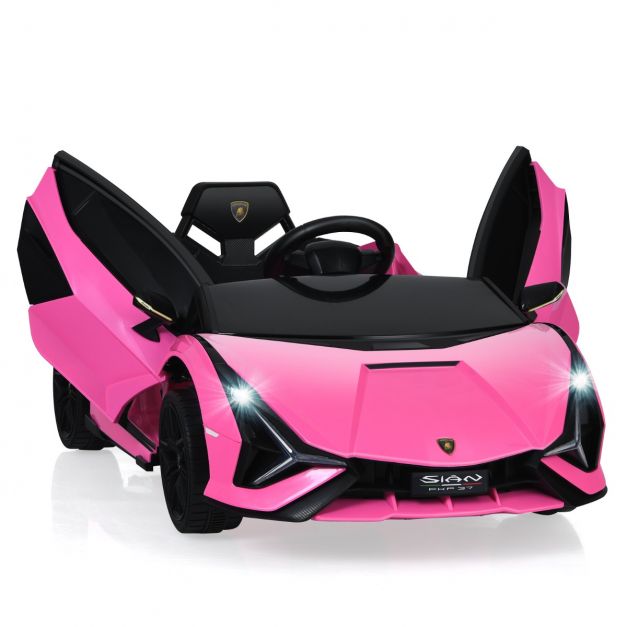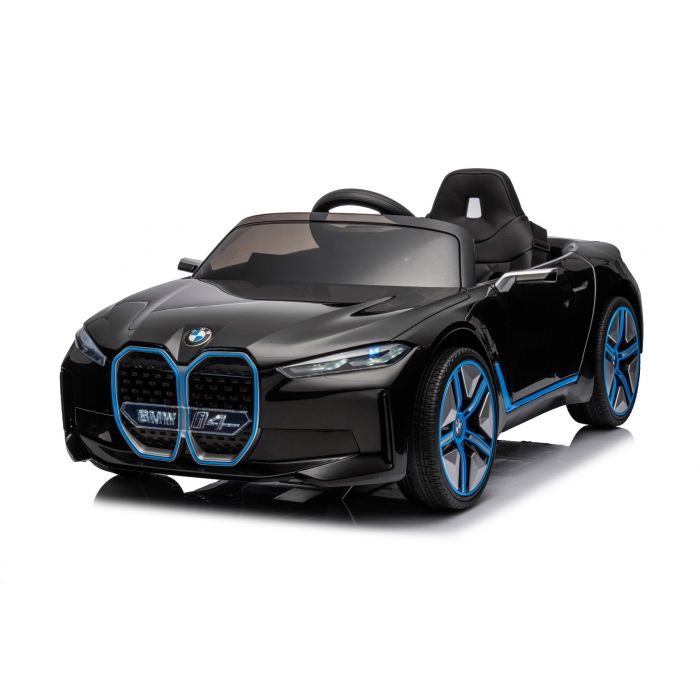To ensure your child's safety, you should consider the following features. Seat Belts, for example are a security measure that is important to consider.
Pros They are the best way to keep your child secure in the car they ride in. They can reduce the risk of him slipping out of the play area or getting expelled. Seat belts are an extra layer of protection for your child when turning around and during sudden stops.
Cons - Certain ride-on vehicles particularly those designed for toddlers, might not have seat belts. Kids may be able to find seat belts restrict or uncomfortable and may decide to avoid or resist using them.
Sturdy Construction
Pros - A ride-on vehicle that is built with strength and high-quality materials is more robust and resistant to damages that ensures long-term safety and durability. It can withstand all the demands of play and provide stability.
Cons - The price of a durable structure could be costly, making the vehicles unaffordable for many families. Ride-on vehicles may be less mobile and maneuverable when they're made of heavier materials.
Low Center Of Gravity
Pros: Vehicles with a low center of gravity are prone to a less chance of tipping over. This reduces the chance of a crash or injury. They are more stable and provide better stability, especially during turns or maneuvers.
Pros - Some ride-on vehicles with a lower center of gravity can result in a loss of the ability to drive off-road or ground clearance which limits their use in certain environments.
Remote control for parents
Pros - Remotely controlled ride-on vehicles permit parents to monitor and help their children play, providing an added security and control. Parents can intervene in emergencies, navigate tricky terrains, or even avoid collisions.
Cons - Remote control for parents could limit children's independence as well as independence, since they depend on guidance from parents and help during play. Additionally, remote-controlled cars may cost more than manual models.
Speed Limiters
Pros- Ride-ons with speed limiters as well as adjustable speed settings let parents decide on the maximum speed for their car. This can reduce the chance of having an accident or collision. They are able to increase the speed slowly as a child develops confidence and capabilities.
Cons - Some children may get out of the lower speeds quickly, causing anger or dissatisfaction from the ride-on car. Additionally, speed limiters may not be accessible on all models or may require additional features or additional accessories.
Safe Start Technology -
Pros: Safe start guarantees smooth and steady stops and starts of the ride and reduces the chance of abrupt jerks or movements that can frighten children or cause them to be unsteady. This ensures a safer and more comfortable ride.
Cons - Ride-on cars with safe start technology might cost more than basic models without this feature. Some kids prefer the gradual acceleration deceleration to be less interesting than immediate stops and stops.
Enhances Visibility -
Pros - Ride-on automobiles with visibility enhancements such as functioning taillights, headlights or reflective materials increase visibility, particularly in dim conditions or areas with dim lighting. They enhance safety by increasing the visibility of vehicles to pedestrians and other vehicles.
Cons - The addition visible features can make it more difficult for battery to drain or in the design of the ride-on vehicle. These factors can cause problems or problems with maintenance.
When you consider these safety features and weigh the benefits, you'll be able to choose a car that prioritizes the safety of your child and also providing them with the most enjoyable and thrilling playing experience. Check out the most popular kids cars for blog examples including childrens electric cars, toy car, car toy toy, a toy car, cars pedal car, electric ride along car, toy cars toy car, toy car, toy car toy car, electric rideons and more. .

What Are The Best Models For Kids Cars? Designed For Outdoor And Indoor Use?
The features of the models for indoor and outdoor use are different. This is how the designs differ from indoor Use Cars -
Dimensions and weight- Cars designed for indoor usage will be smaller in dimensions and weigh less and therefore easier to maneuver within tight areas. These include living rooms and playrooms. They can navigate through narrow spaces and tight passageways with ease.
Low Ground Coverage - Vehicles that are designed for indoor use have an extremely low ground coverage to avoid them getting stuck or snagged against obstacles such as carpets and thresholds. This permits smooth, unhindered motion across indoor surfaces.
Smooth Wheels The wheels of indoor cars are usually constructed from smooth materials such as plastic or rubber. This creates traction and grip for smooth surfaces like hardwood floors, laminate floors, or tiles. The wheels are made for indoor use, to reduce noise and to ensure that surfaces are protected from scratches.
Limited Speed – Indoor cars are typically limited in speed to ensure safe and controlled driving in small space. This helps prevent collisions or accidents that could happen with walls, furniture, or any other obstacle that may be found within.
Outdoor Use Cars -
Durable Construction - Cars designed specifically designed for outdoor use are built using robust materials. These include strong metals or plastics that can endure the harsh elements outdoors, such sunlight, humidity and temperature variations. The cars are resistant to damage from the elements.
For use outdoors, vehicles that have a higher clearance of the ground can navigate bumps and obstacles outside. This allows them the ability to navigate rough surfaces, such as dirt, grass, or gravel without becoming trapped or damaged.
Traction Tires - The tires on cars that are designed for outdoor use are typically fitted with treads or patterns to provide better traction and grip on uneven or slippery surfaces. This gives you more control and stability while driving on outdoor terrain.
Weather resistance. Outdoor vehicles are typically equipped with weather-resistant components like sealed electronics, waterproof casings, and rust-proof materials. This is in order to shield them from environmental damage. They can withstand rain, mud, or even puddles with no compromise in performance.
Outdoor vehicles are generally faster to accommodate the wide spaces of open space, as well as the long distances encountered outside. It offers a thrilling adventure for kids who wish to experience the outdoors.
With these design traits and other features, parents can pick a child's vehicle that best suits their particular requirements for use and the surroundings in which they will utilize it, whether indoors or out. They can also ensure your child's safety as well as a memorable experience. Read the recommended discover more about ride on toys for website advice including toy toy cars, race car toy car, childrens ride on, childrens digger, electric ride on, ride on car, toy and car, childs car toy, car for toy, toy cars toy car and more. .

What Are The Remote Controls For Childrens Cars Available? What Are The Pros And Cons Of These Vehicles?
Remote control children's vehicles Also known as RC cars, or remote-controlled vehicles are available in a variety of dimensions and styles. They also come in a variety of price ranges to suit different budgets and tastes. The pros and cons, as well as the sizes styles, models, and prices, and styles of remote-controlled cars for children are listed below.
Electric RC Cars – Batterie-powered remote-controlled cars that are suitable both indoors and out. The cars are available in different styles such as buggies or trucks.
Nitro RC Cars - Gas-powered remote-controlled cars that have greater speeds and performance, however they require more maintenance and knowledge to operate. Electric RC cars are less bulky and cost less.
Scale Models can be controlled remotely which include vehicles, trucks and planes. Scale models can be found in a variety of scales ranging from 1-10 up to 1-24. The larger scales provide more detail and realism.
Sizes -
The sizes of remote-controlled vehicles for children vary from tiny micro-sized models to larger-scale versions. The dimensions of the vehicle will affect the performance, speed and handling qualities.
Micro-sized cars which are lightweight and small, are ideal for use indoors and by young children. The larger models offer greater power and durability, making them suitable for off-roading and racing.
Prices
The price of a car with remote controls for children is dependent on the size, features, manufacturer, and build-quality.
Electric and Nitro RC cars on a larger scale may cost between $100 and $500.
Models and top-of-the-line hobby RC automobiles cost anywhere from a few hundred to more than a 1000 dollars, based on the degree of detail.
What are the pros and cons?
Pros -
Remote Control Children's Cars - These cars are perfect to entertain your children. They can be enjoyed by adults and children alike.
Skill Development. Driving a RC car allows children to develop hand-eye-coordination, spatial awareness and problem-solving capabilities.
Social Interaction. The RC car encourages social interaction and can be enjoyed by friends and family.
Customization - Many RC vehicles can be upgraded with modifications and accessories that will improve their performance as well as appearance.
Cons
Cost - A remote-controlled vehicle for kids with the latest features or hobby quality models can cost quite a bit.
Learning Curve - Operating an RC Car requires practice and ability young children may have difficulty at first.
Maintenance It is important to maintain the vehicle regularly for RC cars including cleaning, lubrication and repairs.
Safety Issues - RC vehicles pose dangers to safety like falls, collisions and electrical dangers when they're not used under adult supervision and with the utmost care.
Children of all ages will love remote-controlled cars. It is crucial to think about factors such as the cost, size, and safety prior to deciding on the right model. Hobby-grade RC models are suited to older children or enthusiasts. Simpler models are best for younger kids and beginners. Take a look at the best remote control childrens cars kidscars.co.uk recommendations for site recommendations including car toy toy, childs ride on car, 2 seater electric cars, car on ride, two seater childrens electric cars, toy the car, toy in car, car on ride, toy car for car, childrens digger and more. .
